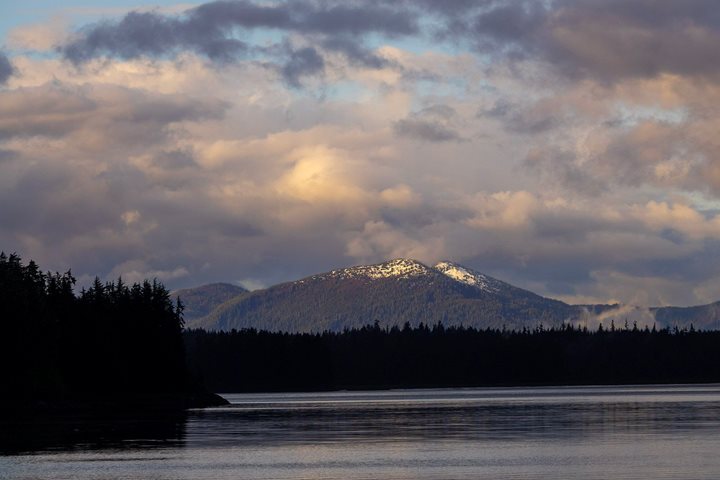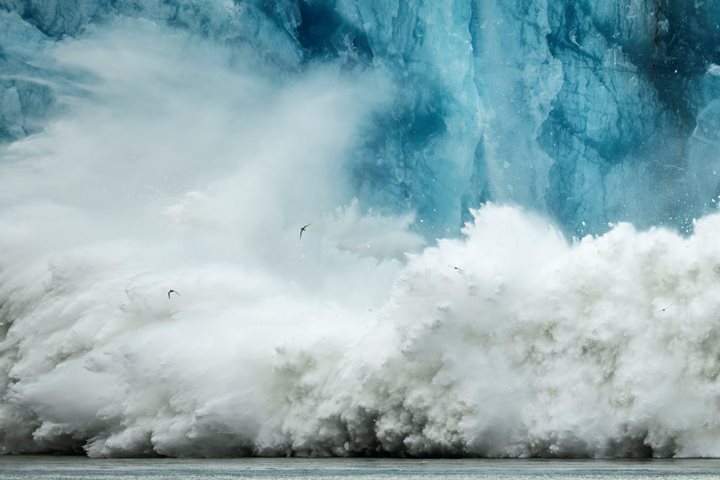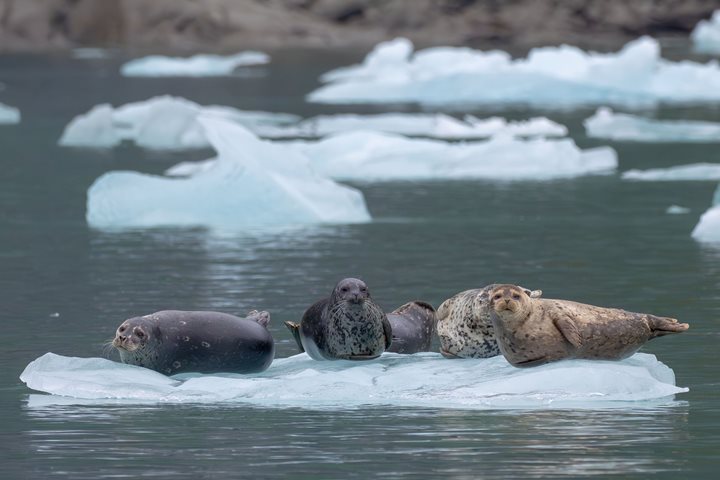Our first day aboard National Geographic Sea Lion was filled with excitement and wonderment. Not wasting any time, we headed south towards Tracy Arm Fjord to South Sawyer Glacier. Cruising past icebergs, bergy bits, and growlers, everyone got to see the immensity of Southeast Alaska as the fjord’s steep granite walls rose around us. For the day’s first expedition, we loaded into Zodiacs to get a closer look at the face of South Sawyer, a tidewater glacier. We observed numerous harbor seals and even some bald eagles perched on the ice. In the afternoon, we cruised south in hopes of spotting some other charismatic megafauna, specifically humpback whales, as we sailed through Stephen’s Passage. It felt like we were in whale soup, as we became totally surrounded by humpbacks. Spouts and flukes were seen everywhere.
- Daily Expedition Reports
- 11 Jun 2023
South Sawyer Glacier and Stephen’s Passage, 6/11/2023, National Geographic Sea Lion
- Aboard the National Geographic Sea Lion
- Alaska
Emily Mall, Naturalist
Emily proudly grew up in the state of Michigan, doing whatever she could to experience and get to know our natural world. She carries a degree in zoology and public policy and worked in an agroecology lab throughout her time in school. Discovering th...
Read MoreShare Report
Alaska Escape: LeConte Bay, Wrangell and Misty Fjords
VIEW ITINERARYRelated Reports
5/29/2025
Read
National Geographic Sea Bird
Endicott Arm
Dawes Glacier, located at the head of Endicott Arm in Southeast Alaska, is an active tidewater glacier in the remote Tracy Arm-Fords Terror Wilderness Area. Reaching the glacier requires a 30-mile journey through a narrow fjord lined with sheer rock walls rising over 3,000 feet. These cliffs are veined with waterfalls and often blanketed in mist. Throughout the fjord, remnants of the glacier float in the form of icebergs. The glacier feeds cold, silty meltwater into the fjord, giving the water a distinctive milky-green hue and supporting a rich marine food web. Harbor seals were hauled out on ice floes near the glacier. Gulls and Arctic terns were actively feeding, likely drawn by the small fish and plankton concentrated by the glacial outflow. The glacier calved several times, hurling large chunks of ice across the water’s surface, sending the birds fleeing. The sound of the ice hitting the water echoed off the steep rock walls that rise thousands of feet on either side.
5/27/2025
Read
National Geographic Sea Bird
Dawes Glacier in Endicott Arm
We could not have asked for a better way to end the expedition. Our last day was amazing! Visiting Dawes Glacier in Endicott Arm was a highlight with its crystal-blue ice and resting harbor seals floating by on the ice. In the evening, we even got to see a couple of humpback whales off the bow of the ship. We ended the day by watching images of the beautiful moments created on our expedition during the famed guest photo slideshow.







